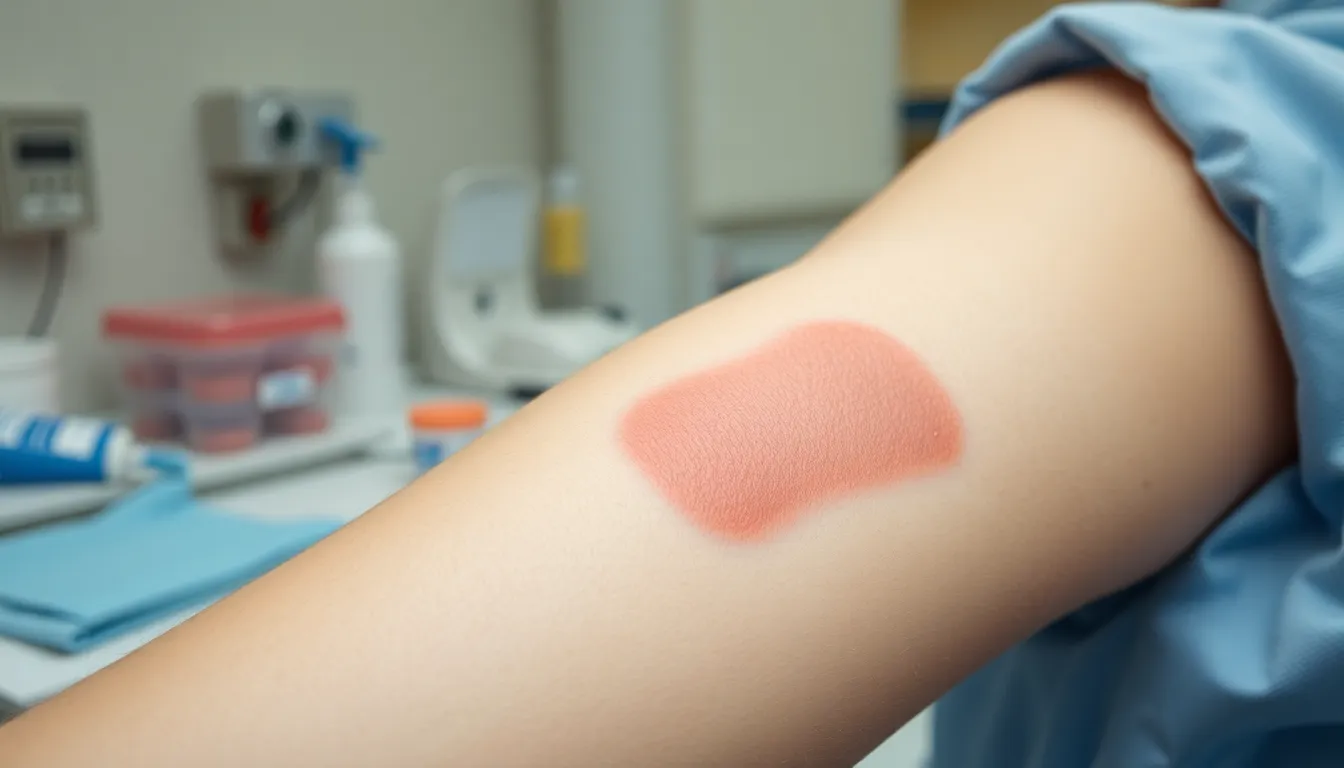When it comes to healing wounds, most people think about bandages and antiseptics, but what about the scent? Yes, you read that right! A healing wound has its own unique aroma, and it’s not exactly what you’d call a bouquet of roses. Imagine a mix of earthy, slightly sweet notes that could make even the most seasoned nose do a double take.
Table of Contents
ToggleUnderstanding Wound Healing
Healing wounds produce distinctive aromas that reflect the biological processes occurring. These scents can provide insight into the stages and factors that influence recovery.
Stages of Wound Healing
Wound healing comprises four distinct stages: hemostasis, inflammation, proliferation, and maturation. Hemostasis initiates when a wound occurs, leading to blood clot formation. Inflammation follows, characterized by redness and swelling, as the body fights off infection and clears debris. During proliferation, new tissue forms, and the wound begins to close. Maturation occurs last, where the wound strengthens and remodels over weeks to months. Each stage may release specific scents, hinting at the changes within the wound.
Factors Affecting Healing
Several factors influence how wounds heal and their associated odors. Infection presence leads to a foul smell, indicating an underlying problem. Nutrition plays a vital role; proper intake of vitamins and proteins enhances healing. Conditions such as diabetes can impede recovery, affecting both the healing process and scent. Additionally, age impacts healing efficiency; older individuals may experience slower healing and different aromas. Understanding these factors aids in monitoring healing progress.
What Does a Healing Wound Smell Like?

Healing wounds emit distinctive odors that resonate with the biological activities taking place. Understanding these smells offers valuable insights into the healing process.
Common Odors Associated with Healing
Common scents from healing wounds include earthy, slightly sweet, and sometimes metallic aromas. These fragrances indicate granulation tissue formation and healthy healing. A more pronounced earthy scent often suggests the presence of necrotic tissue, while a sweet fragrance can signal improved blood flow. Monitoring these odors provides essential information about healing progress. If an unpleasant or foul smell arises, infection might be present and requires immediate attention.
Odor Changes Over Time
Wound odors evolve as healing unfolds. Initial stages often generate stronger, more pungent scents, reflecting inflammation and tissue breakdown. As healing advances into the proliferation stage, a softer, sweeter aroma appears, indicating granulation tissue. During the maturation phase, odors may diminish considerably, often becoming less noticeable. Tracking these changes can help gauge the wound’s healing time frame. Significant alterations, particularly a return to foul odors, could indicate complications that necessitate medical evaluation.
When to Seek Medical Attention
Monitoring a wound’s healing process is crucial for ensuring optimal recovery. Noticing any unusual smells or changes can indicate underlying issues.
Signs of Infection
Foul odors can often signal an infection. Symptoms such as increased swelling, redness, or warmth around the wound also warrant attention. Pus or drainage that appears yellow, green, or brown indicates possible bacterial growth. Fever or chills accompanying these symptoms further emphasize the need for medical evaluation. Ignoring these signs can lead to serious complications, making timely intervention essential.
Other Concerns with Wound Odor
Unexpected changes in wound odor may suggest other health concerns. A strong, persistent smell could indicate necrotic tissue, which indicates a need for professional assessment. Increased sweetness in odor might relate to improved blood flow; however, if accompanied by other symptoms, it may still require attention. Secondary symptoms, such as pain or prolonged healing time, also signify the need for medical guidance. Addressing these factors promptly contributes to effective wound management.
Tips for Wound Care
Effective wound care promotes healing while minimizing complications. Proper techniques ensure that the wound environment remains ideal for recovery.
Maintaining Hygiene
Keeping the wound clean is essential for healing. Cleanse the area gently using mild soap and water before applying any dressings. Avoid scrubbing, as this can irritate the wound. Daily inspections help identify signs of infection. Always wash hands thoroughly before and after touching the wound. For larger or more complex wounds, consider using sterile gloves during dressing changes to prevent contamination. If moisture builds up beneath the dressing, it’s crucial to change it promptly to maintain a dry environment. Sticking to these hygiene practices can significantly improve healing outcomes.
Using Dressings and Ointments
Selecting appropriate dressings facilitates optimal healing conditions. Use dressings designed for the wound type to absorb excess moisture and protect the area. Consider transparent films for shallow wounds, or use hydrocolloid dressings for moderate exudate. Applying ointments may help create a moist healing environment while reducing pain. Some specialized ointments also contain ingredients that promote healing, such as silver or honey. Follow manufacturer instructions for best results. Regular dressing changes, based on the wound’s condition, support a clean, healthy healing process. Consistently using the right products accelerates recovery and reduces the risk of infection.
Healing wounds emit distinctive scents that can provide valuable insights into the recovery process. Recognizing these aromas helps individuals monitor healing and detect potential complications early. The transition from stronger, earthy smells to softer, sweeter notes signals progress, while unpleasant odors may indicate infection or other issues requiring medical attention.
By understanding the significance of these scents and implementing proper wound care practices, individuals can enhance their healing journey. Regularly inspecting wounds and maintaining hygiene are essential steps in promoting recovery and preventing serious complications. Ultimately, being attentive to the changes in a wound’s odor can empower individuals to take charge of their healing process.





